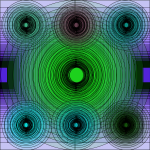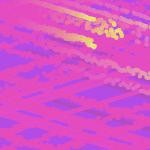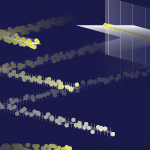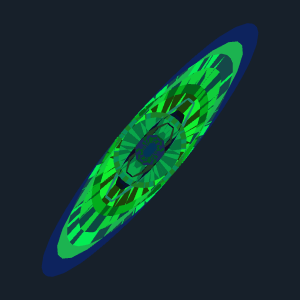
My conference project, entitled Stellar Remnants, investigates the relationship between autonomy and interactivity in generative art through five pieces made in Processing. All of my sketches involve using key presses to influence the variables of a sketch to manipulate amount, size, movement, and color among other things. My first two sketches, Galaxy and Meteor Belt, both use 3D and loops, and expand in a similar way into the x, y, and z dimension. Despite the vast difference in appearance, how the key presses affected the sketch was similar. I used key presses to manipulate the bounding limits of the loops creating the 3D shapes. I also used matrices to rotate each sketch. But what really made the two feel similar was the communication between the interactive keys and the sketch, despite how different the two looked and were modified through interaction. I was worried but as I progressed I attempted different baselines for sketches to influence a different relationship between the interaction and the program. For example the last sketch I made, Shooting Stars, pushed me out of my comfort zone by using classes.
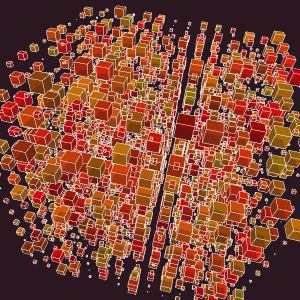
Involving classes was a difficult, yet worthwhile adjustment that facilitated a different type of interactivity connection. Namely what it allowed was for me to have three interactive bodies, whereas in past sketches only one single object or group would be modified through interaction. How a participant interacts with each of the three “stars” is the same, but the fact that each interaction is local to one body allows for the three simple circles to deviate from one another in a generative manner. Additionally to push the envelope I did not use a call to background, but instead a transparent rectangle the size of the campus that allowed for a feeling of animation, but also allowed for texture which none of my other sketches had yet.
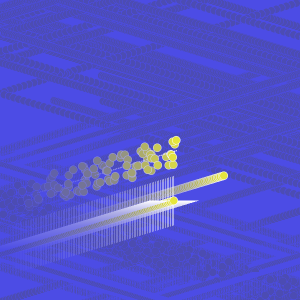
What was intimidating about working with classes is that variables are kept within the class tab of the document, and all of my key presses up until then were in the main document in the draw function. These key presses were solely used to alter variables, and having to worry about which variables were where was a difficult hurdle. However, what I found out is that having classes actually helped with interactivity, as the key presses associated with the interactive bodies could just simply be kept in the class tab as well. Whereas in the past documents I had to have a multitude of lines of key presses with extensive labeling, the organization of the class tab allowed for a cleaner and easier to maneuver document. I am proud with how my ability to work with interactivity evolved into being multifaceted, and of course this could not have happened without what I consider my transitory sketches, Aurora and Nebulae.

Aurora was my third sketch, and thus the first one I worked in 2D, which like classes was an intimidating step considering I was losing the ability to work with a whole dimension. To give this sketch the same complexity that the 3D sketches had, I used multiple noise functions and calls to random, which became difficult as random and noise functions are trickier to control with variable changes. The sketch ended up with a more quiet feeling than the past two for me, which went hand in hand with how I feel this sketch is the one I had the least control of. All of the other sketches have specific variable increases that I can see clearly reflected when displayed, whereas Aurora’s key presses to me are harder to correlate.

After grappling with Aurora for so long, another 2D sketch was daunting, but Nebulae came to fruition in the most broken apart process out of any of the sketches. For the other four I worked at the processing document until I had a foundation I was satisfied with, then I ran with it until 90% completion. Nebulae was quite different in that even after my initial idea of looped transparent circle getting progressively smaller, I had to leave the sketch and come back multiple times to make it progress. Ultimately I ended up with something I am proud of and believe looks aesthetically pleasing, but as far as interactivity is concerned I view this piece to be the weakest.
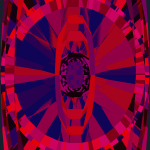

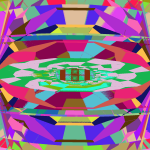
With the other sketches I believe the interactions were logical but the changes that occurred had a degree of surprise and worked together like multipliers to add to the spontaneity as more were interacted with. Nebulae on the other hand does not have that same degree of surprise, and if the other sketches had interactivity that multiplied, this one added. Different bodies could be interacted with, but in interacting with multiple elements it was not as if a whole new thing was being formed, just two tampered with shapes. Despite this setback, I am quite pleased with how this project turned out.

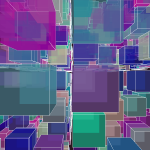
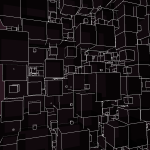
As a whole adhering to a space theme as well as involving interactivity served to be an interesting skew to my creative process that brought up many questions about aesthetics and what should get prevalence. Interactivity allowed for me to give my sketches several colorsets, which also begged the question whether to keep a consistent color theme over the sketches or use what fit each best. I opted for the later as individualizing the colorsets, I believe, was better for highlighting the differences in interactivity.





